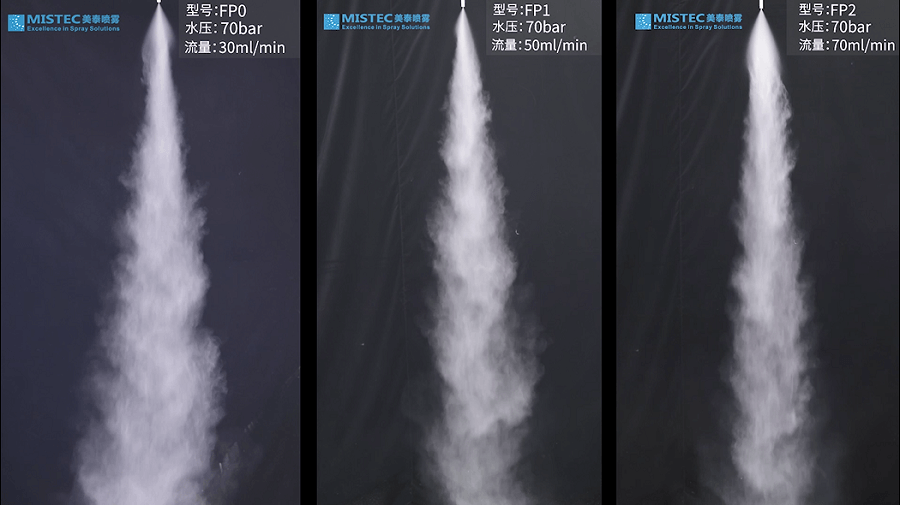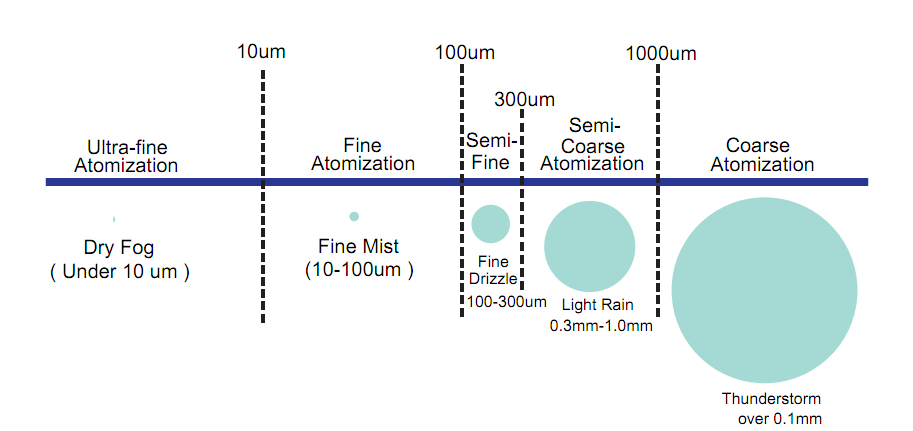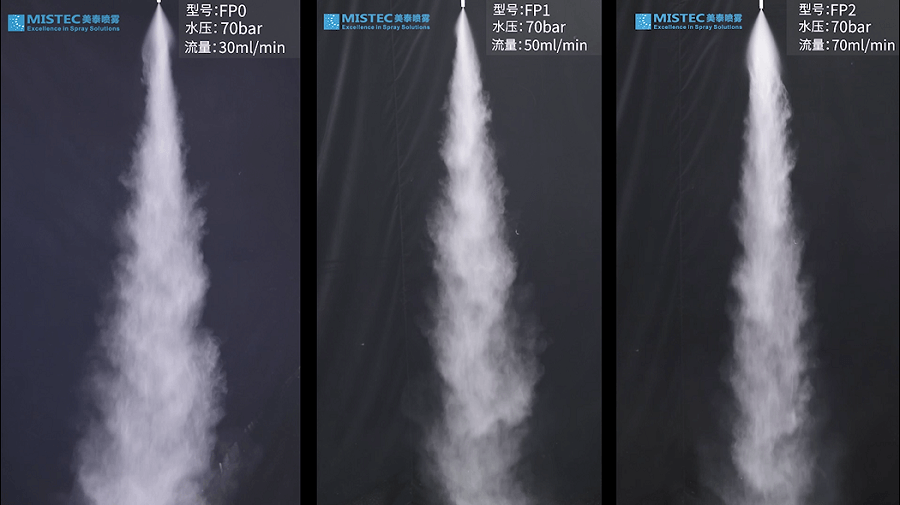Menu
The importance of misting particle size of misting nozzle
Misting particle diameter of misting nozzle is an index used to measure misting effect. For a single misting particle, the shape can be like a ball, but for a group of misting particles, misting nozzle misting particles of large and small, it is necessary to use statistical sampling method to get the average misting particle size of misting nozzle misting particles.

The indexes of atomized particle size of misting nozzle are generally Saltel mean (namely SMD, Shaw mean, D32, volumetric area ratio), which refers to the ratio of atomized particle volume and surface area of misting nozzle. The index of DV90 can also be written as Dv0.9, D (V, 0.9), DV90%, which refers to the size of 90% of atomized particles in the misting nozzle. Evenness index -- N The particles atomized by the nozzle cannot all be the same size, thick and fine. Here is an index to measure the evenness, that is, index N in the test report. In addition, there are DV50, fog drop speed, concentration and other indicators.

For misting, misting particle misting nozzle has a very important significance for misting effect:
The importance of misting particle size of misting nozzle:
1. misting particle size of misting nozzle affects the evaporation time of fog drops and misting particles
2. misting particle size of misting nozzle affects the movement trajectory; The smaller the grain, the faster the evaporation time;
3. misting particle size of misting nozzle is directly related to the gas-liquid contact area, affecting the reaction effect and speed;
4. For the fuel nozzle, the misting particle size and uniformity of the misting nozzle affect the combustion efficiency and effect.
In addition, the misting particle size of misting nozzle also affects the absorption distance of misting nozzle in humidification applications.
Ultra fine dry misting nozzle and mist dust removal nozzle are two types of products, from the literal understanding of the main misting particle size is different, namely dry fog and mist. Dry fog is a very fine fog, misting particle size of about 10 microns; The particle size of the mist misting is about 50 microns, or even larger. The misting mechanism and structure of the two types of products are different.
Ultra fine dry misting nozzle is a new misting technology developed on the basis of micro-fog. The particles are finer, the misting is thicker, and it is widely used in space disinfection and dust suppression, mainly because the misting particles are fine, the water amount is small, and it is easy to be vaporized, which is more suitable for disinfection. For dust control, ultra fine water mist has little impact on the material water content. It has high application value for the treatment of fine inhalable dust.

The size of a particle
Droplet size refers to the size of the individual spray droplets that make up the shape of the nozzle spray.In a given spray, all spray droplets are of different sizes. The methods to describe the size of droplets in a spray are as follows: median volume diameter Dv0.5 (VMD), median mass diameter (MMD), Sauter mean diameter (SMD) and median number diameter expressed as (NMD).
VMD Method of expressing droplet size in terms of the volume of the atomized liquid. When measured by volume, the size of droplets with median volume diameter is a value, that is, 50% of the total volume of spray liquid is composed of droplets with diameter larger than the median value, and 50% is composed of droplets with diameter smaller than the value.
SMD Method of expressing droplet size in terms of the number of droplet in the spray. Means that in terms of number,50% of the droplets are smaller than the median diameter, and 50% are larger than the median diameter.
SMD A method of expressing spray fineness in terms of the surface area produced by the spray. Sauter mean diameter is the diameter of a droplet whose volume to surface area is equal to the total volume to total surface area of all droplets.

